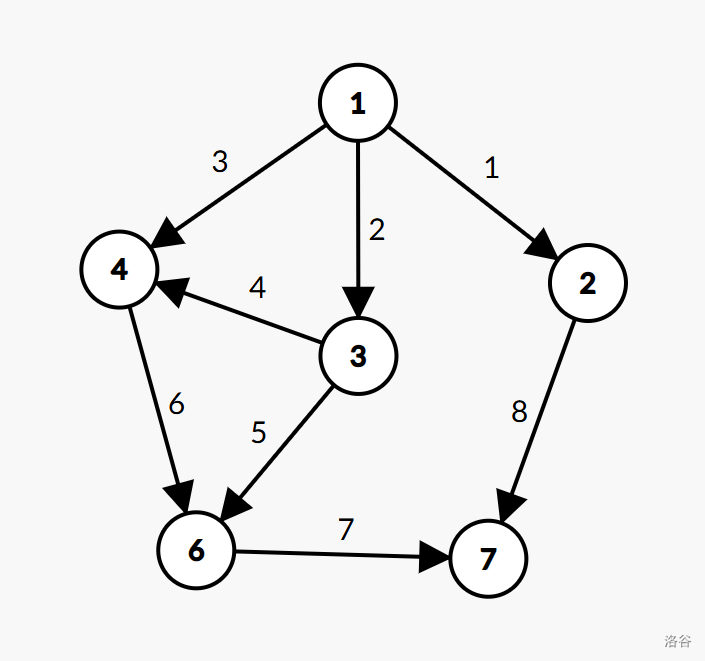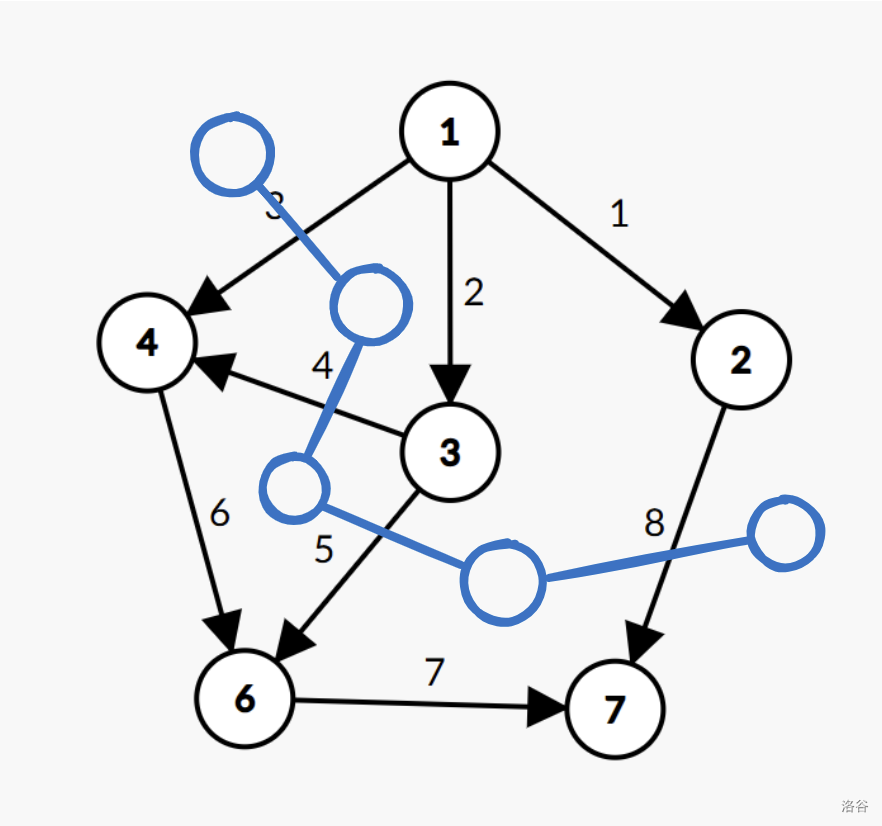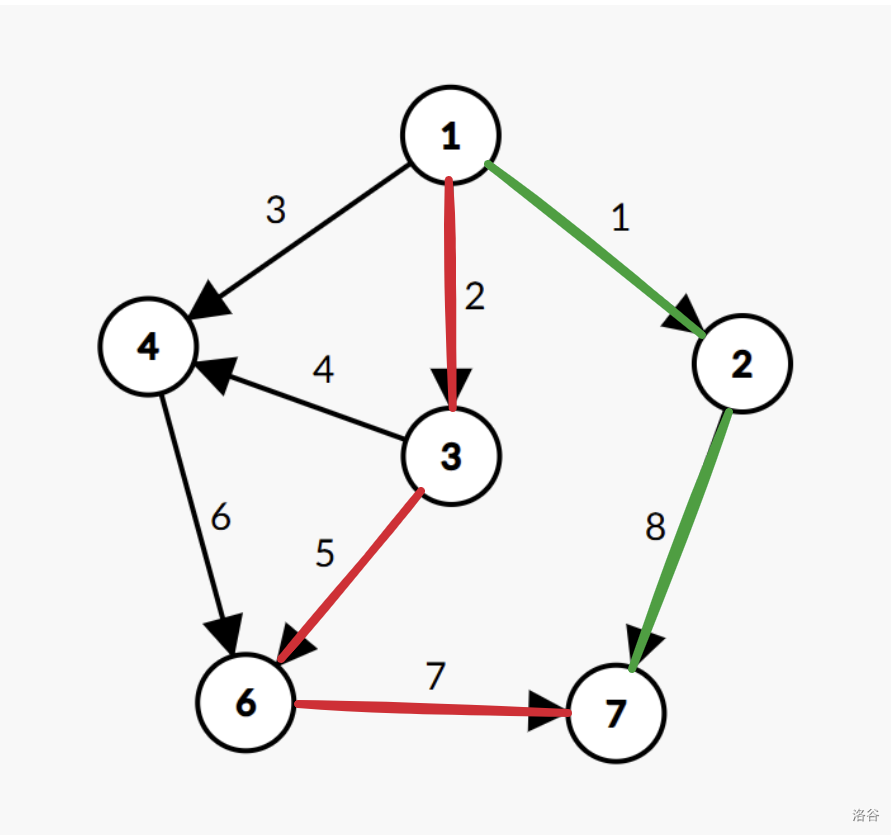Skiers
Description
给定 \(n\) 个点的有向无环平面图,求最少多少条从 \(1\) 到 \(n\) 的路径能覆盖原图的所有边?
\(1\le n\le 5\times10^3\)
Solution
考虑从 \(1\) 到 \(n\) 的路径其实是边的链覆盖,那么最小链覆盖即为求解的答案。通过 Dilworth 定理可知,最小链覆盖等于最大反链,从而问题转化为求最大反链(两两无法到达的边的集合)。

例如:图示的有向无环平面图,\(1\) 号点为起点,\(7\) 号点为汇点。最大反链是 \(3,4,5,8\) 边构成的集合(注意集合不唯一),不难发现原图的答案就是 \(4\)。
考虑如何求解最大反链,可以将平面图转化为对偶图,则最大反链即为对偶图的最长路。

如图,给出了原图的对偶图的最长路,注意这里多开了虚拟起点和汇点。
那么,怎么求最长路呢,这里给出一种简单又迅速的做法,从起点开始 DFS,如果遍历到 \(1\) 个点之前已经遍历过了,那么说明多出了一条对偶图的边。

若绿色路径为当前 DFS 的路径,红色为之前 DFS 的路径,此时发现到达了一个已经经过的点,则从该点开始将红色的边筛出来,直到绿色节点经过过的点,即 \(1\) 号节点。用红色边最长路 \(+1\) 再去更新绿色边的最长路即可。
Code
#include <bits/stdc++.h>
#define fi first
#define se second
#define int long long
using namespace std;
typedef pair<int, int> PII;
typedef long long LL;
const int N = 5e3 + 10, M = 3 * N;
int n;
int h[N], e[M], ne[M], idx;
int st[N], dp[M];
PII lst[N];
void add(int a, int b) {
e[idx] = b, ne[idx] = h[a], dp[idx] = 1, h[a] = idx ++;
}
void dfs(int u) {
st[u] = 1;
for (int i = h[u]; ~i; i = ne[i]) {
int v = e[i];
if (st[v] == 0) lst[v] = {u, i}, dfs(v);
else {
int res = 0, tmp = u;
while (st[v] == -1) res = max(res, dp[lst[v].se] + 1), v = lst[v].fi;
dp[i] = res;
while (tmp != v) dp[lst[tmp].se] = res, tmp = lst[tmp].fi;
lst[e[i]] = {u, i};
}
}
st[u] = -1;
}
signed main() {
cin.tie(0);
cout.tie(0);
ios::sync_with_stdio(0);
cin >> n;
memset(h, -1, sizeof h);
int k, x;
for (int i = 1; i < n; i ++) {
cin >> k;
for (int j = 1; j <= k; j ++)
cin >> x, add(i, x);
}
dfs(1);
int res = 0;
for (int i = 0; i < idx; i ++)
res = max(res, dp[i]);
cout << res << endl;
return 0;
}